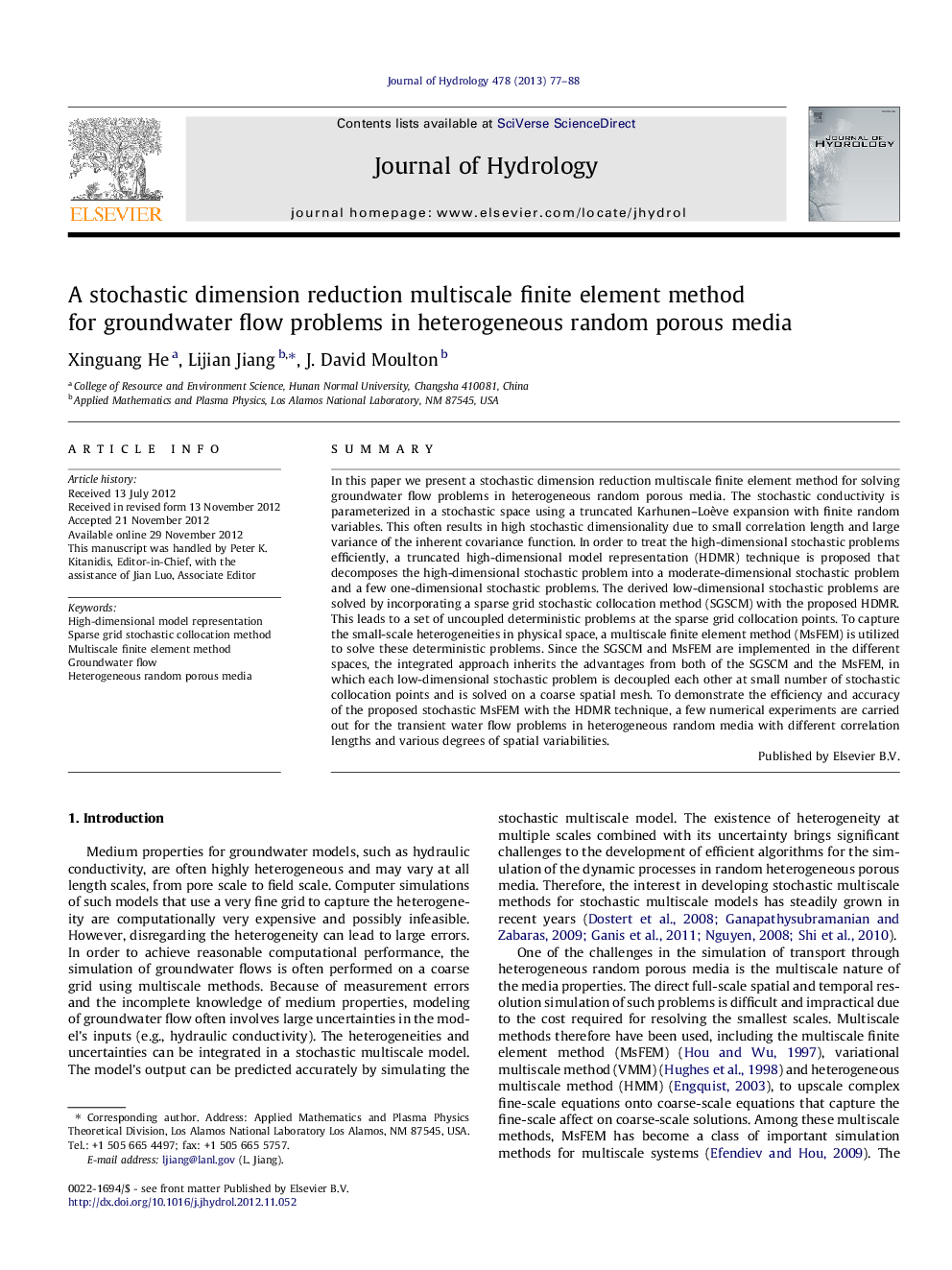| Article ID | Journal | Published Year | Pages | File Type |
|---|---|---|---|---|
| 4576532 | Journal of Hydrology | 2013 | 12 Pages |
SummaryIn this paper we present a stochastic dimension reduction multiscale finite element method for solving groundwater flow problems in heterogeneous random porous media. The stochastic conductivity is parameterized in a stochastic space using a truncated Karhunen–Loève expansion with finite random variables. This often results in high stochastic dimensionality due to small correlation length and large variance of the inherent covariance function. In order to treat the high-dimensional stochastic problems efficiently, a truncated high-dimensional model representation (HDMR) technique is proposed that decomposes the high-dimensional stochastic problem into a moderate-dimensional stochastic problem and a few one-dimensional stochastic problems. The derived low-dimensional stochastic problems are solved by incorporating a sparse grid stochastic collocation method (SGSCM) with the proposed HDMR. This leads to a set of uncoupled deterministic problems at the sparse grid collocation points. To capture the small-scale heterogeneities in physical space, a multiscale finite element method (MsFEM) is utilized to solve these deterministic problems. Since the SGSCM and MsFEM are implemented in the different spaces, the integrated approach inherits the advantages from both of the SGSCM and the MsFEM, in which each low-dimensional stochastic problem is decoupled each other at small number of stochastic collocation points and is solved on a coarse spatial mesh. To demonstrate the efficiency and accuracy of the proposed stochastic MsFEM with the HDMR technique, a few numerical experiments are carried out for the transient water flow problems in heterogeneous random media with different correlation lengths and various degrees of spatial variabilities.
► We present a stochastic dimension reduction multiscale method for groundwater flow problems. ► A new technique decomposes the high-dimensional problem into a few lower-dimensional problems. ► We incorporate sparse grid collocation and multiscale methods into the dimension reduction model. ► The numerical experiments are carried out for transient flow problems with different conductivities. ► The proposed stochastic dimension reduction model significantly improves computational efficiency.
